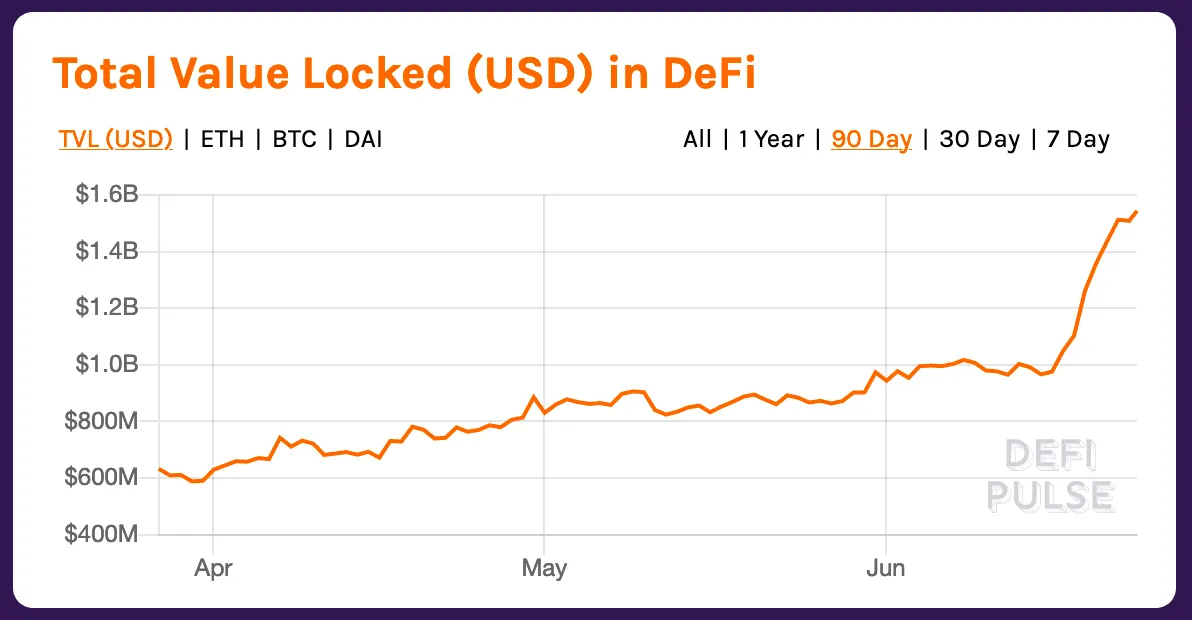In brief
- Beam is scheduled to complete a major hard fork on June 28, adding several improvements.
- It will add two features that will lend itself towards supporting DeFi applications.
- But these apps will benefit from Beam's privacy layer.
Beam, one of crypto’s most promising—and most experimental—privacy coins is undergoing a hard fork on June 28, which is essentially a network upgrade. This will enhance its privacy protections and lay out the foundations for creating privacy-first decentralized finance (DeFi) applications.

The problem with the flourishing $1.5 billion DeFi sector is that the majority of its applications aren’t private. Typically built on the Ethereum blockchain, all the trades are publicly available. And, as Decrypt pointed out in February, even such tools like the Ethereum Name Service–where you give your own address a name—can be used to help identify users and watch their trades. So, if Beam could bring privacy to the DeFi space, it would be a big step forward.
"Beam will enable true private and decentralized DeFi instruments like private stablecoins and private synthetics which will track commodity, stocks and ETFs. All will be traded on a fast and unstoppable true DEX. Most of this will be built and will be launched this year," Guy Corem, director of the Beam Foundation told Decrypt.
The upcoming Beam hard fork
Launched in January 2019, Beam is based on a blockchain protocol known as Mimblewimble. The Harry Potter-themed protocol makes transactions really small so it can support more transactions without making its blockchain hard to run—increasing scalability. It also stops you from reusing a blockchain address, making it hard for those pesky blockchain analytics companies to monitor everything you’re doing, and boosting privacy.
And now Beam is getting even more features. The new update, named Eager Electron 5.0, will add confidential assets to the Beam network. Confidential assets are a type of token that can be created on Beam, and can be used to represent practically anything, including other cryptocurrencies. They have the same levels of privacy and can be traded on Beam’s decentralized exchange (DEX).
To create a type of confidential asset, the user has to lock up 3,000 Beams, worth $1,440 at current prices. They are then able to issue as many tokens of this type as they would like. The money is held as collateral and gets returned when all the confidential assets are brought back in and destroyed. Corem described this as an anti-spam feature.
The update will also lay the infrastructure for scriptless contracts. These are like smart contracts but where the details of the contract are kept private, as well as the transactions themselves. For example, if a smart contract was a business transaction, it would expose the details of that transaction, not something that businesses would want.
Adding support for DeFi
Both of these features will help Beam support DeFi—in a privacy-focused way.
Alex Romanov, Beam CTO told Decrypt, "As a part of building a confidential DeFi platform on top of the Beam blockchain, we will enable the creation of Mimblewimble-based sidechains and integrate a wide variety of Scriptless Contracts to support escrows, collateralized debt positions, multiparty transactions, and oracle-based settlements."

Collateralized debt positions are already a big part of DeFi. They are used for borrowing and lending platforms, such as Compound, the number one DeFi app. Nearly $600 million is locked up on the Compound platform for current loans, showing the potential size of the market.
“Our first focus will be on DeFi applications with centralized components, including confidential stablecoins, decentralized trading (DEX), and synthetic assets,” Romanov added.
Synthetic asset platform Synthetix is the third biggest DeFi app, with $185 million locked up on its platform. It supports the trading of traditional assets, such as commodities and stocks.
Ranked 143 by market cap, Beam has a long way to go to attract the attention of the main cryptocurrency market. But if it can provide such DeFi services—and they have greater privacy—then there could be a new kid on the block.

